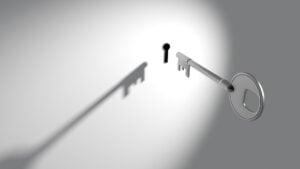This management re-think is also seen not only in the composition of the team and the specialties of its members but in the training of the individuals that make up the group as well. Upskilling is becoming more prevalent as organizations are realizing that with technological changes happening on a constant basis, not to mention the rise of artificial intelligence, that team members need to be retrained and skills upgraded to meet this new, complex reality.
Roles & Responsibilities
To foster a culture of innovation, and to drive transformation at the business level, it takes a variety of disciplines and functions. Composing a talented innovation team requires the right synthesis of strategists, technologists and communicators, as put forth by author and innovation expert George Krasadakis in the article, “How to Build the ‘Innovation Dream Team.’” Krasadakis is also the author of The Innovation Mode (Springer). Some of these activities and specific roles will depend on the type and size of the company. What industry the company works in will also impact the roles on the team.
That being said, in general the team should be strategic, tactical and agile. Krasadakis notes, “In the typical case, companies need a driving force from within— a solid team to naturally diffuse the innovation thinking, introduce the right technologies and the best practices regarding innovation and creative thinking; to make sure the overall innovation program is also in alignment with the ongoing business; to manage the noise and the risk of (internal) disruption from the ‘innovation machine.’”
The responsibilities of the innovation team should include setting the strategy, as well as defining success. The team must provide the innovation framework, which includes technology, and the development of an innovative culture. To communicate, diffuse, and inspire, as Krasadakis notes, is also part of what innovation leaders and their team must implement within the company. Measuring and evaluating progress should also be an important part of the team’s role.
The innovation team must further constitute, notes Krasadakis, “creative members, engineers, and technologists to showcase real innovation, at pace; the team needs to clearly connect the theoretical, abstract notions of innovation with the commercial context of the company; it must demonstrate how innovation can bring concrete commercial results, fast.”
Tapping into Talent
The approach to innovation talent has evolved in this new globalized work world. While common themes have emerged, different organizations have chosen distinct paths. In this recent Innovation Talent Roundtable, the innovation community shared several thoughts on the search for innovation talent and fostering a culture of innovation.
Igniting innovation culture and talent is fraught with danger as, if you’re not careful, it can lead to burnout. Finding innovation talent that fits within a given organization is, to put it simply, challenging. Good innovation talent itself is elusive. Add to the equation that a given person not only needs to have the specific skill set being sought, but that same person must fit with corporate and innovation culture already established.
Talent management is transforming. Despite an organizational evolution that breaks down functional silos, most companies are still fairly traditional with their hiring practices defined by a hierarchical talent operating system. On the other hand, some companies do feature cross-functional project teams that encourage innovation and collaboration. Other systems may have an option for employees to opt-in to rewarding, innovation focused work.
Teaming Up
We asked ChatGPT, what constitutes an ideal innovation team? Of course, the team and the context may vary depending on the scope, size and goals of the organization. There may be some overlapping of skills and expertise. Collaboration, diverse perspectives, and a mix of skill sets are key factors in building a successful innovation team. Here are some common roles that are often found in successful innovation teams:
- Project Manager: A project manager provides overall leadership, coordination, and organization of the innovation team. They ensure that the team stays on track, meets deadlines, and achieves objectives.
- Innovation Strategist: An innovation strategist is responsible for developing the overall innovation strategy, identifying opportunities, and aligning the team’s efforts with the organization’s goals. They analyze market trends, customer needs, and competitive landscapes to guide the team’s direction.
- Design Thinker/UX Designer: A design thinker or user experience (UX) designer focuses on understanding user needs and designing solutions that are intuitive, user-friendly, and impactful. They apply design thinking principles and methodologies to drive innovation and create meaningful user experiences.
- Technical Expert: Depending on the nature of the innovation project, a technical expert such as a software engineer, data scientist, or hardware specialist may be necessary. They bring deep technical knowledge and expertise to develop and implement innovative solutions.
- Business Analyst: A business analyst evaluates the commercial viability of ideas, conducts market research, analyzes financial data, and identifies potential risks and opportunities. They provide valuable insights to help the team make informed decisions and create business value.
- Creative Thinker/Innovator: A creative thinker or innovator brings fresh ideas, new perspectives, and out-of-the-box thinking to the team. They are skilled in brainstorming, ideation, and concept development, helping to foster a culture of creativity and innovation.
- Marketing Specialist: A marketing specialist ensures that the innovation team’s ideas and solutions are effectively communicated and promoted to the target audience. They develop marketing strategies, messaging, and campaigns to generate awareness, adoption, and customer engagement.
- Data Analyst: A data analyst helps the team leverage data and analytics to gain insights, make data-driven decisions, and measure the impact of innovation initiatives. They collect, analyze, and interpret data to identify patterns, trends, and opportunities.
- Project Sponsor/Executive Champion: A project sponsor or executive champion is a senior leader who provides support, resources, and guidance to the innovation team. They help overcome barriers, align the team with organizational objectives, and advocate for the team’s innovations within the company.
Create the Innovation Mindset
In today’s agile organizations, the innovation team is no longer confined to a silo of the past. In the present, the team must have a renewed emphasis on multi-disciplinary skills and tactics, with the “right balance of strategy, execution, and communication experts,” write Krasadakis. It is this balance of skills that can ultimately take on the tasks of innovation while effectively communicating its endeavors to management and senior leaders, to create an innovation mindset and atmosphere with the company.
From strategists and product experts, to technical experts and program managers, to IP and insights experts, to innovation advocates and process leaders, the innovation team must stretch its boundaries beyond the four walls of a laboratory. As Krasadakis says, “The structure of the innovation team should be flexible and flat: there should be three lines of reference — the strategic, the practical innovation and the communication — all aligned but also with clear separation of concerns and well-defined, independent work streams and programs.”
The innovation teams of today take on new roles and responsibilities that the isolated teams of the past may not have considered. New challenges and responsibilities should work hand in hand with the traditional pathways, and roadblocks, to growth that innovators face. Only then can the innovation and transformation journey truly take place.
Video courtesy of Strategyzer
Contributor
-

Matthew Kramer is the Digital Editor for All Things Insights & All Things Innovation. He has over 20 years of experience working in publishing and media companies, on a variety of business-to-business publications, websites and trade shows.
View all posts


































































































































































































